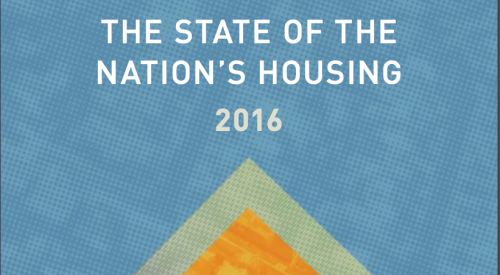FHFA hands Fannie Mae and Freddie Mac new loan purchase guidelines
The mortgage market footprint of Fannie Mae and Freddie Mac may be on the path toward contracting after their regulator issued instructions for the GSEs to purchase only qualified loans.
The Federal Housing Finance Agency (FHFA) recently released guidelines instructing both enterprises to stop buying loans that are subject to the ability-to-pay rule, beginning on Jan. 10. Fannie and Freddie will no longer purchase mortgages that have a term of more than 30 years, are not fully amortizing, or include fees in excess of 3 percent of the total loan amount. Both entities are to buy only loans that meet the requirements for a qualified mortgage, as defined by the Consumer Financial Protection Bureau earlier this year.
“Effectively, this means Fannie Mae and Freddie Mac will not purchase interest-only loans with 40-year terms or those with points and fees exceeding the thresholds established by the rule,” the FHFA said in a statement.
Other loans deemed eligible for purchase include mortgages that meet the special qualified mortgage definition or are exempt from the ability-to-repay requirements outlined in the Dodd-Frank Act. The GSEs can buy loans that are processed through their automated underwriting systems and loans with a debt-to-income ratio greater than 43 percent.
The National Association of Federal Credit Unions contends that these guidelines will negatively affect consumers in underserved and rural communities.
“The end result is that a number of otherwise financially healthy borrowers, who do not meet the stringent qualified mortgage standards for one reason or another, may be denied a mortgage,” said Carrie Hunt, general counsel for the credit union association.
Foreclosures and bad loans near pre-housing-crisis levels
More homeowners are staying current with their loans as several mortgage trackers report that foreclosure and loan delinquency rates declined during the first quarter and through May.
The March Mortgage Monitor, the most recent report as of press time released by Lender Processing Services (LPS), Jacksonville, Fla., showed that the rate of new problem loans—seriously delinquent mortgages that were current six months ago—fell below 1 percent for the first time since the early days of the housing crash in 2007. New problem loans approached pre-crisis levels at 0.84 percent and closed in on conditions that existed during 2000 through 2004 when the rate was 0.55 percent.
Borrowers with loan-to-value ratios of just 100 to 110 percent typically default at more than twice the national average, but the number of loans in that condition fell 41 percent compared with a year ago. Arizona, Florida, Nevada, and California still exceed the national average in terms of the number of borrowers with negative equity positions, but even those states improved 40 percent since January 2012. Foreclosure starts declined 8.2 percent between February and March and foreclosure sales rose 10.1 percent.
The Mortgage Bankers Association (MBA) also reported the lowest level of loans entering foreclosure since the second quarter of 2007. The combined percentage of loans either entering foreclosure or being one payment late during the first quarter fell to its lowest level in four years, dipping to 10.3 percent. While noting the decline is important, the MBA warned that parsing seasonally adjusted swings from true performance after the housing crisis is difficult.
“We remain in a period of slow and uneven economic and job growth in the U.S., and there are still many borrowers without stable, full-time employment, or that are still unemployed,” said Michael Fratantoni, MBA’s vice president of research and economics.
RealtyTrac said total foreclosure activity between April and March dropped to the lowest level that the Irvine, Calif.,-based real estate company has seen in six-years. A total of 70,133 properties started the foreclosure process in April, off 4 percent from March and down 28 percent from the comparable year ago period. As of May, 11.3 million mortgages were at least 25 percent underwater, down from 12.8 million in May 2012.
Land buy shows strong demand for Inland Empire
Foremost Communities, Irvine, Calif., closed the off-market purchase of what is said to be the largest sale of Inland Empire land in seven years.
The residential land investment company acquired 960 acres of Toscana, a master-planned community located south of the City of Corona in Riverside County, Calif. The purchase price was undisclosed. Tom Doyle, one of the founders of Irvine-based Whittlesey Doyle, which brokered the deal for the seller, Sunny Sage LLC, Temecula, Calif., announced the transaction in May.
Doyle said that Foremost Communities plans to process tentative maps to finalize the development plans as approved under the Toscana Specific Plan. Foremost intends to develop the site and initiate a builder lot sales program for merchant home builders. The Tuscan-themed project calls for 1,443 units of single-family and multifamily residences. The specific plan offers a mix of densities ranging from two to five dwelling units per acre for single-family homes and eight to 14 units per acre for multifamily residences. In addition to the community’s proximity to the Cleveland National Forest and the Gavilan Hills Reserve, other project amenities will include parks, hiking trails, sports park, pool, and recreational facilities.
“Demand for land is strong, inventories of homes for sale and lots for home building is shrinking quickly,” Doyle said in a written statement. “We have seen an increase in finished lot prices of approximately 15 percent to 20 percent since the beginning of 2013. The sale of Toscana is further demonstration that the Inland Empire land market is continuing to strengthen. Home builders want to capitalize on land that is near jobs, shopping, entertainment and transportation. We have multiple, large land deals in escrow and some additional ones that will soon be under contract.”













